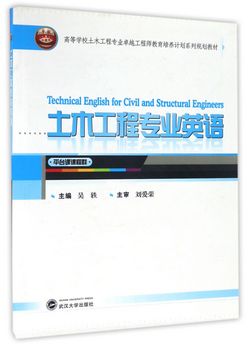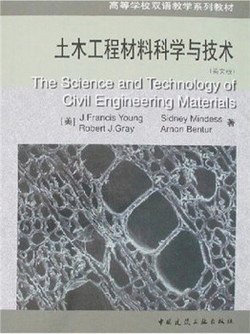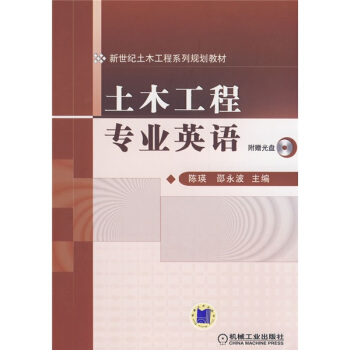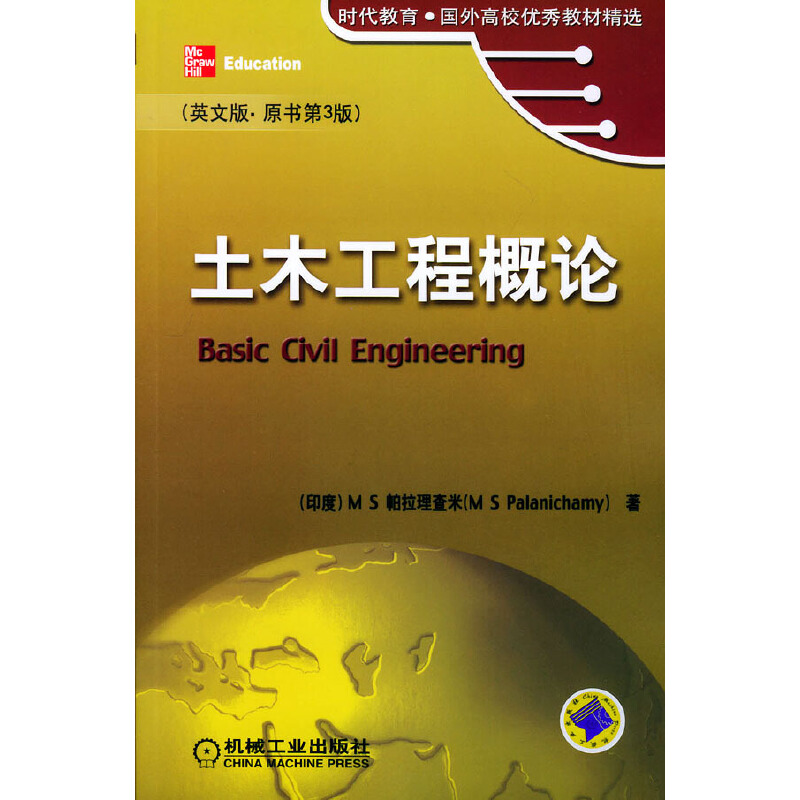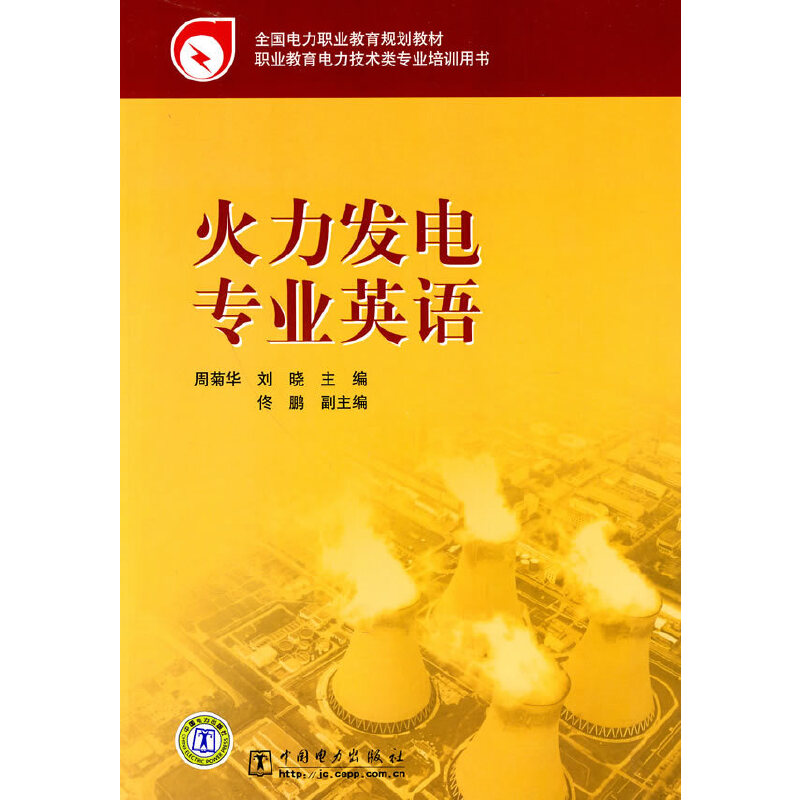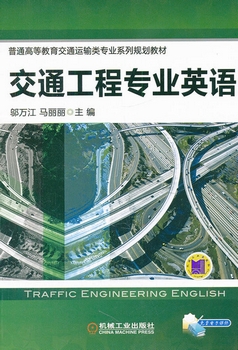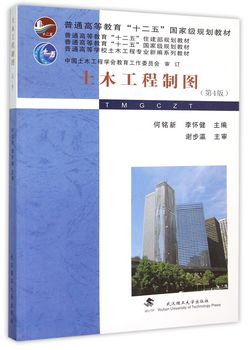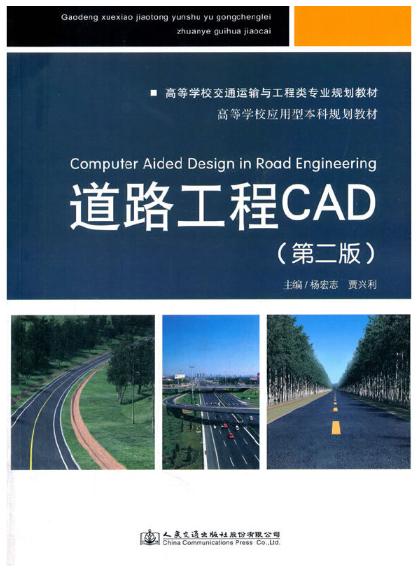土木工程专业英语 / 高等学校土木工程专业卓越工程师教育培养计划系列规划教材
¥23.00定价
作者: 吴轶
出版时间:2015-10
出版社:武汉大学出版社
- 武汉大学出版社
- 9787307159952
- 65682
- 47168730-1
- 2015-10
- 工学
- 土木工程
- TU
- 土木工程
- 本科
内容简介
吴轶编著的《土木工程专业英语》是按照高等学校土木工程专业卓越工程师教育培养计划的要求编写的,系统地介绍了土木工程类专业英语的相关知识。本书在充分体现全面性、新颖性、系统性和广泛适用性的基础上,注重对专业基础内容和前沿专业知识的关注,内容贴近教学实际,针对性强。本书既可以作为工程技术人员专业英语的参考书,又可以作为本科生、研究生教材与教师用书。
本书选材涉及土木工程概况、土木工程类别、土木工程材料、工程荷载及作用、结构构件类别、地下工程、桥梁工程、道路工程、工程抗震设计、隔震技术、建筑加固技术等方面,共分为13章,每章均由课文、生词和短语组成。在内容上,涉及工程材料、材料力学、理论力学、混凝土结构设计原理、钢结构设计原理、道路工程、结构抗震设计、建筑加固理论、土力学、基础工程等相关学科知识。
本书选材涉及土木工程概况、土木工程类别、土木工程材料、工程荷载及作用、结构构件类别、地下工程、桥梁工程、道路工程、工程抗震设计、隔震技术、建筑加固技术等方面,共分为13章,每章均由课文、生词和短语组成。在内容上,涉及工程材料、材料力学、理论力学、混凝土结构设计原理、钢结构设计原理、道路工程、结构抗震设计、建筑加固理论、土力学、基础工程等相关学科知识。
目录
Chapter 1 Overview of Civil Engineering
1.1 Introduction of Civil Engineering
Section A The Origin of Civil Engineering
Section B What Is a Civil Engineer
1.2 The Importance of Civil Engineering
Section A The Role of Civil Engineering in Society
Section B Historic Civil Engineering Landmarks
References
Chapter 2 Types of Civil Engineering
2.1 Structural Engineering
Section A Introduction of Structural Engineering
Section B Basic Types of Structures
2.2 Bridge Engineering
2.3 Underground Engineering
Section A Introduction of Metropolitan Railway
Section B Introduction of Tunnel Engineering
2.4 Road Engineering
Section A Introduction of Road Engineering
Section B Maintenance of Road Engineering
References
Chapter 3 Materials of Civil Engineering
3.1 Concrete
Section A Introduction of Concrete
Section B Properties of Concrete
3.2 Steel
3.3 Masonry
References
Chapter 4 Loads and Actions in Civil Engineering
4.1 Dead Load and Live Load
4.2 Wind Load and Wind Damage
Section A Introduction of Wind Load
Section B Classification of Wind Load
Section C Horizontal Wind Loads and Roof Wind Loads on Structural Frames
Section D Wind for Components and Wind Damage
4.3 Earthquake Action and Damage
Section A Earthquake Action
Section B Earthquake Damage
4.4 Tsunami Damage to the Structure of Civil Engineering
Section A Tsunami Damage
Section B Tsunami Damage to Buildings
Section C Resistance of Tsunamis for Structures
References
Chapter 5 Members of Civil Engineering
5.1 Horizontal Forced Structural Members
Section A Introduction of Beam
Section B Forces within a Beam
Section C Shear Strength and Parameters
Section D Coupling Beams
Section E Flat Plates
Section F Behavior of Concrete Slabs
Section G Floor Framing Systems
5.2 Vertical Forced Structural Members
Section A Introduction of Column
Section B Increasing Compressive Strength
Section C High-strength Steel in Concrete Columns
Section D Confinement in Reinforced Concrete Columns
Section E Introduction of Concrete Structural Wall
Section F Behavior of Structural Wall
Section G Steel Plate Shear Walls
5.3 Arch
Section A Introduction of Arches
Section B Development of Arch Bridges
5.4 Truss
Section A Introduction of Truss
Section B Analysis of Internal Force
Section C Production and Installation of a Truss
References
Chapter 6 Basic Types of Engineering Structure
6.1 Reinforced Concrete Structures
Section A Application of Reinforced Concrete Structures
Section B Performance of Reinforced Concrete Structures
6.2 Steel Structure
Section A Introduction of Steel Structures
Section B Incheon International Airport
6.3 Classification of Steel Concrete Composite Structure
Section A Steel Concrete Composite Structure
Section B Concrete-filled Steel Tube Column
6.4 The Modern Complex High-rise Building Structure
Section A Performance-based Seismic Design
Section B Performance Objectives of PBSD
References
Chapter 7 Bridge Engineering
7.1 Introduction of Bridge Engineering
Section A History of Bridge
Section B London Millennium Footbridge
7.2 Classification of Bridge
Section A Rigid Beam and Cantilever
Section B Suspension and Arch
7.3 Design of Bridge
Section A Design of Bridge Structure
Section B Numerical Analysis of Bridge Structures
References
Chapter 8 Underground Engineering
8.1 Introduction of Underground Engineering
Section A Exploitation of Underground Space
Section B The Underground Strategy
8.2 Underground Tunnel Engineering
Section A Tunneling Risk
Section B A New Requirement of Tunneling
8.3 Development of Underground Space Structure
Section A Web-based Shield Tunnel Construction Information
1.1 Introduction of Civil Engineering
Section A The Origin of Civil Engineering
Section B What Is a Civil Engineer
1.2 The Importance of Civil Engineering
Section A The Role of Civil Engineering in Society
Section B Historic Civil Engineering Landmarks
References
Chapter 2 Types of Civil Engineering
2.1 Structural Engineering
Section A Introduction of Structural Engineering
Section B Basic Types of Structures
2.2 Bridge Engineering
2.3 Underground Engineering
Section A Introduction of Metropolitan Railway
Section B Introduction of Tunnel Engineering
2.4 Road Engineering
Section A Introduction of Road Engineering
Section B Maintenance of Road Engineering
References
Chapter 3 Materials of Civil Engineering
3.1 Concrete
Section A Introduction of Concrete
Section B Properties of Concrete
3.2 Steel
3.3 Masonry
References
Chapter 4 Loads and Actions in Civil Engineering
4.1 Dead Load and Live Load
4.2 Wind Load and Wind Damage
Section A Introduction of Wind Load
Section B Classification of Wind Load
Section C Horizontal Wind Loads and Roof Wind Loads on Structural Frames
Section D Wind for Components and Wind Damage
4.3 Earthquake Action and Damage
Section A Earthquake Action
Section B Earthquake Damage
4.4 Tsunami Damage to the Structure of Civil Engineering
Section A Tsunami Damage
Section B Tsunami Damage to Buildings
Section C Resistance of Tsunamis for Structures
References
Chapter 5 Members of Civil Engineering
5.1 Horizontal Forced Structural Members
Section A Introduction of Beam
Section B Forces within a Beam
Section C Shear Strength and Parameters
Section D Coupling Beams
Section E Flat Plates
Section F Behavior of Concrete Slabs
Section G Floor Framing Systems
5.2 Vertical Forced Structural Members
Section A Introduction of Column
Section B Increasing Compressive Strength
Section C High-strength Steel in Concrete Columns
Section D Confinement in Reinforced Concrete Columns
Section E Introduction of Concrete Structural Wall
Section F Behavior of Structural Wall
Section G Steel Plate Shear Walls
5.3 Arch
Section A Introduction of Arches
Section B Development of Arch Bridges
5.4 Truss
Section A Introduction of Truss
Section B Analysis of Internal Force
Section C Production and Installation of a Truss
References
Chapter 6 Basic Types of Engineering Structure
6.1 Reinforced Concrete Structures
Section A Application of Reinforced Concrete Structures
Section B Performance of Reinforced Concrete Structures
6.2 Steel Structure
Section A Introduction of Steel Structures
Section B Incheon International Airport
6.3 Classification of Steel Concrete Composite Structure
Section A Steel Concrete Composite Structure
Section B Concrete-filled Steel Tube Column
6.4 The Modern Complex High-rise Building Structure
Section A Performance-based Seismic Design
Section B Performance Objectives of PBSD
References
Chapter 7 Bridge Engineering
7.1 Introduction of Bridge Engineering
Section A History of Bridge
Section B London Millennium Footbridge
7.2 Classification of Bridge
Section A Rigid Beam and Cantilever
Section B Suspension and Arch
7.3 Design of Bridge
Section A Design of Bridge Structure
Section B Numerical Analysis of Bridge Structures
References
Chapter 8 Underground Engineering
8.1 Introduction of Underground Engineering
Section A Exploitation of Underground Space
Section B The Underground Strategy
8.2 Underground Tunnel Engineering
Section A Tunneling Risk
Section B A New Requirement of Tunneling
8.3 Development of Underground Space Structure
Section A Web-based Shield Tunnel Construction Information

